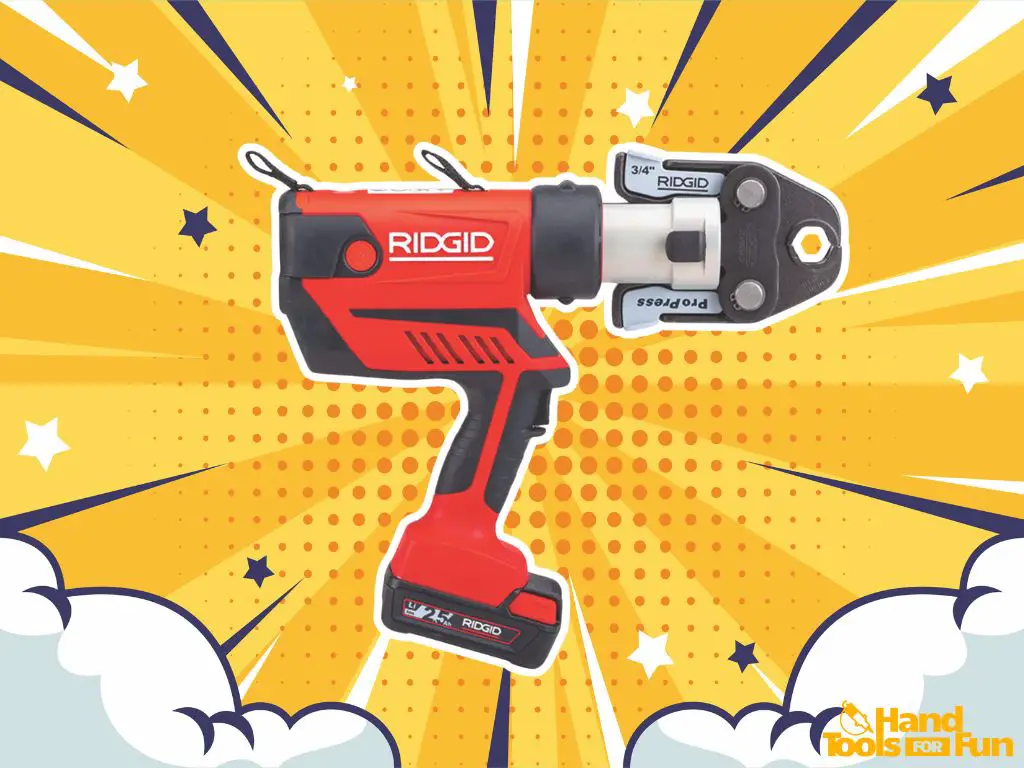In in an era where efficiency and reliability in plumbing have become paramount, ProPress tools have revolutionized the way we approach copper pipe connections.
As enthusiasts eager to master the art of modern plumbing, understanding and utilizing ProPress technology is an essential skill set.
This essay unveils the intricacies of ProPress tools and their individual components, including the pressing gun, jaws, and specialized fittings.
Coupled with this knowledge, you’ll learn how to expertly prepare copper tubing to ensure that your connections are not only secure but also stand the test of time.
Whether you’re a DIY aficionado or a budding professional, you’re on the right path to making high-quality, solderless connections with ProPress as your chosen method.
Understanding ProPress Tools
Understanding ProPress Tools: The Key Components and Their Functions
ProPress tools have revolutionized the way we approach piping projects, making connections faster, easier, and without the need for soldering or welding.
If you’re a fellow enthusiast stepping into the fascinating world of modern plumbing, knowing your ProPress tools inside out is essential for delivering a job well done.
So, without further ado, let’s dive into what makes up these ingenious devices and what each part is responsible for.
The Main ProPress Tool Body

The heart of the ProPress system is the tool body – this is your handheld powerhouse. It often encompasses an ergonomic design, ideal for minimizing fatigue during extended use.
Within this body are the hydraulic systems and electronic circuits that deliver the force necessary for creating secure, leak-proof connections.
Press Jaws and Rings

The press jaws and rings are the business end of the ProPress toolkit. Interchangeable, these components are what physically interact with the fittings, exerting the pressure needed to crimp them onto a pipe.
They come in various sizes to accommodate different diameters and types of fittings, ensuring a perfect seal every time.
While jaws are typically used for standard pipe sizes, rings can be used for larger pipes and in tighter spaces where the full tool might not fit.
Actuator (Trigger)

This part of the ProPress tool initiates the press cycle. Once you’ve positioned the jaws or ring around the fitting, pulling the actuator (often a trigger or button) tells the tool to start pressing. It’s all about making sure the tool boasts reliable control for precision work every single time.
Rotating Head

Flexibility is key in tight spaces, and a rotating head has become standard on ProPress tool models.
It allows for the adjustment of the angle at which you approach the fitting, providing greater access and maneuverability.
You’ll find getting around corners and obstructions becomes a cinch with a rotating head feature.
The Battery and Charger

Cordless convenience lies in a high-capacity battery, empowering you to take your craft anywhere without the need for a power outlet.
A quality battery ensures sustained performance throughout the job. Of course, keeping this battery charged is crucial, thus the accompanying charger is just as important.
The best part? Current models sport batteries that charge quickly and last long enough to press hundreds of fittings on a single charge.
LED Work Light
When overhead lighting is less than ideal, which let’s face it, is often the case, the integrated LED work light becomes a real eye-saver.
It illuminates the workspace, allowing for precise placement and crimping, and ensuring no detail goes unnoticed.
The Calibration Gauge
Consistent performance is the name of the game with ProPress tools, so a calibration gauge always comes in handy.
It’s used to verify that the press force output remains within the optimal range. A correctly calibrated tool ensures every fitting is crimped with just the right amount of force, maintaining the integrity of the connections.
Cutter and Deburring Tool
Every good connection starts with a cleanly cut pipe. The cutter provides a straight, burr-free cut essential for a proper fit.
After cutting, the deburring tool comes into play to smooth the pipe edge, preventing any damage to the fitting’s O-ring. This prep work is crucial for a sound, leak-proof press connection.
So there we have it, the nuts and bolts of ProPress tools laid bare. Each component plays a pivotal role in the plumbing journey, advancing from a hopeful idea to a fully realized system.
Whether in tight corners or vast open spaces, mastering the use of each part is what elevates a good job to a perfect one. Dive in, get pressin’, and let the pipes be the conduit to undeniable craftsmanship.
Preparing Copper Tubing

Preparing copper tubing prior to using a ProPress is a task that, while simple, requires attention to detail to ensure a leak-free and reliable connection.
Even seasoned plumbers know the importance of preparation, because the quality of the end result hinges on the process that leads up to the pressing of the ProPress fittings.
Here’s a step-by-step guide to properly prepare your copper tubing:
1. Measure and Mark the Tubing
Begin by measuring the length of copper tubing you need for your project and mark it using a permanent marker. Precision is key to ensure the tubing fits perfectly in the designated spot.
2. Cut the Tubing

Using a tubing cutter, firmly grip the tubing and roll the cutter around the pipe. Tighten the cutter slightly after each rotation.
This method provides a straight cut without deforming the tube. Remember, a clean cut helps ensure a proper press.
3. Ream and Deburr
After cutting the tube, remove any burrs or rough edges from the inside and outside of the tubing with a deburring tool.
This step is crucial to avoid damaging the o-ring inside the fitting during insertion. A smooth edge also reduces turbulence and potential corrosion points within the tubing.
4. Clean the Exterior
To promote good adhesion, clean the outside of the tubing where the fitting will be pressed. Use a fine-grit emery cloth or specialized cleaning brush.
The goal is to achieve a bright, shiny finish free from grease, dirt, and oxidation.
5. Check the Tubing and Fittings
Before proceeding to press, inspect the tubing and the fitting to ensure they are free from defects and damage. Any scratches or dents can compromise the integrity of the seal.
6. Insert the Fitting
Slide the copper fitting onto the tubing until it reaches the tubing stop. The tubing stop is usually inside the fitting and ensures the proper insertion depth is achieved.
7. Align the Press Jaws
Position the press jaws around the fitting, ensuring they align squarely to prevent uneven pressing. Misalignment can lead to an improper seal and is a common mistake that can easily be avoided.
8. Press the Connection

Now it’s time to press. With the jaws correctly positioned, activate the press tool. The ProPress will complete the connection in a matter of seconds, applying the perfect amount of force to seal the fitting to the tubing.
9. Visually Inspect the Connection
After pressing, give the connection a visual inspection to confirm that the press is complete and the fitting is securely attached to the tubing.
10. Test for Leaks
After pressing, perform a leak test as recommended by the fitting manufacturer. Pressure testing the system will help verify the integrity of all connections before putting the piping into service. The sense of confidence in a job well-done will come from ensuring no leaks are present.
This concludes our walk-through of the critical steps in making a flawless ProPress connection. Remember, as with any skill, practice combined with knowledge leads to perfection. Embrace the process and soon it’ll become second nature.
By following these steps, you’ll prep your copper tubing just right for a successful and secure ProPress connection.
Always remember that the details in preparation can determine the longevity and reliability of your plumbing work. Happy pressing!
The mastery of ProPress tools in copper plumbing does not merely signify a technical accomplishment; it heralds a new era of efficiency and precision in your handiwork.
By embracing the techniques discussed, from the careful preparation of the copper tubing to the final press that seals the connection, you can take pride in the flawless execution of your plumbing projects.
Armed with this newfound knowledge, every joint you complete and every line you press will not only reflect your skill but also the superior capabilities of ProPress technology.
So set forth and apply these lessons, confident in the knowledge that your work will be as enduring as the pipes you bind.


